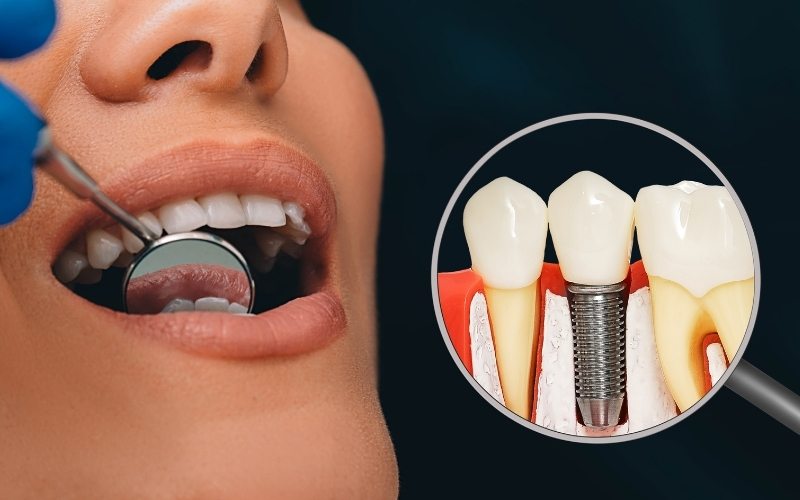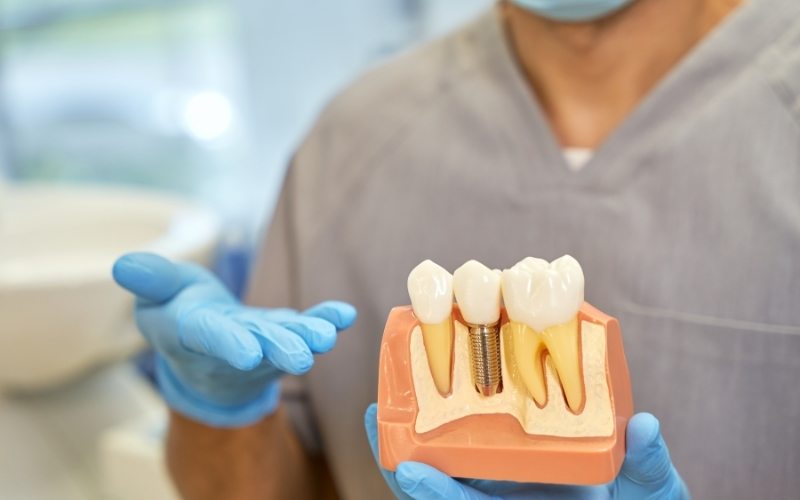When you think of dental implants, most people probably don’t immediately think of them as a solution to the problem of missing teeth. But for those who suffer from alveolar bone loss and need removable types of cement for their teeth, dental implants are an excellent way to save their smile. And even though they may not be as glamorous as a beautiful, perfectly-fitting smile, getting the perfect Full mouth dental implants has just as much blood, sweat, and tears into it as anything else.
Table of Contents
What are Dental Implants?
Dental implants are implants inserted into the jawbone to replace lost teeth. They are usually made from titanium but can be made from durable, lightweight material. The implants are shaped like a bowl with a sharp tip at the bottom. When a tooth is lost, the direction of the bowl is hollowed out to receive the implant. The implant, secured in the hollowed-out tip with a metal or plastic screw, is then replaced in the mouth and filled with concrete to fill any remaining space behind the tooth.
How are Dental Implants Performed?
Before you book an appointment for dental implants, you will be evaluated by a dentist or oral surgeon to determine if the proposed procedure is correct for you. During the consultation, you will be given a detailed case history of your tooth loss and dental hygiene and a detailed explanation of the implant procedure. You will have several multiple-photon emission computed tomography (MPEG-CT) images of your head and teeth better to understand your bite and the integrity of your enamel. Your dentist will then plan the most effective procedure to place the implants and create a secure seal. If you are interested in getting dental implants, the first step is determining if the tooth you have is the appropriate one to replace. Next, the dentist will prepare a sample of your bone to be tested for suitability. After the bone test, the dentist will design a piece of your teeth to be tested for quality. After the quality test, the implant will be placed in your mouth to determine if it will work.
The Benefits of Getting Dental Implants
After years of trying and overcoming many challenges, many patients realize the significant benefits of getting dental implants. A healthy smile is everything, and it brightens a person’s appearance, but it can also improve their self-esteem and make them feel confident and loved. Dental implants, which are put in place of natural teeth, are beautiful and white, and they are almost like teeth attached to your face. And unlike teeth, which are generally removed, implants can be placed and removed as needed. This makes it much easier to schedule regular dental check-ups and keep your implants looking as good as new.
The Risks of Getting Dental Implants
One of the most significant risks of getting dental implants is not following directions precisely. If you are not a pro, you may not know that getting a dental implant is not as easy as putting a screw in there and hoping it works. Many factors go into creating a successful dental implant. Some of them are explained below:
Clear headspace: The level of skill required for implant placement in the patient’s head is much higher than placing the implant in a tooth. – Risk of infection – The incidence of infection among dental implants is much higher than for teeth. The infection risk for dental implants is very high and is discussed in detail below.
Dental bleeding and bruising: Dental implants are very delicate. If you receive a dental implant that has been improperly placed or extracted, you may bleed or bruise quite severely. This could lead to other problems such as infection and even unnecessary surgeries.
Difficulty of placement: The implant has to be placed just right. It needs to be placed into your skull just right. It shouldn’t be placed too far forward or backwards. It shouldn’t be placed too high or too low. If it isn’t placed correctly, it may not work well.
Difficulty of removal: The implant has to be removed just as quickly. There shouldn’t be any complications in taking the implant out of your mouth. It shouldn’t be fussy. It shouldn’t make you feel uncomfortable or dissatisfied.
Finishings: There are many possible finishing options for dental implants. They include fillings or crowns, which can be designed to match your teeth or can be made to match the ridges on your teeth. Dental implants don’t require any finishing, but they can be an option if you want them that way.
Three Simple Things You Can Do To Help Ensure a Successful Implant Procedure

Take care of your teeth
The most important thing you can do for any surgery is taken care of your teeth. Apply a basecoat of fluoride toothpaste daily. You are brushed twice a day and flossed daily. If you forget, remember to eat a balanced diet that includes fruits, vegetables, healthy fats, and fibre for solid teeth and gums.
Plan ahead
- Make sure you know everything about the procedure and the recovery process.
- Call your dentist at least a month before your appointment to make sure you know upcoming courses that may impact your ability to be there.
- Get all of your questions answered, and make sure you know how long you should expect to be in the recovery room on each occasion you visit the dentist.
Follow directions
Don’t get surgery confused with renovations or maintenance. The implant procedure is very different. If you are not familiar with the terminology, you may need to call your dentist to explain.
Conclusion
Dental implants are a great way to get a second set of teeth, and they are invisible and can be placed anywhere you would have lost teeth. Dental implants can save your smile if you have lost teeth due to alveolar bone loss. They are easy to have done, can be permanent, and can be placed anywhere in your mouth. These are just some reasons why you should consider getting dental implants.
